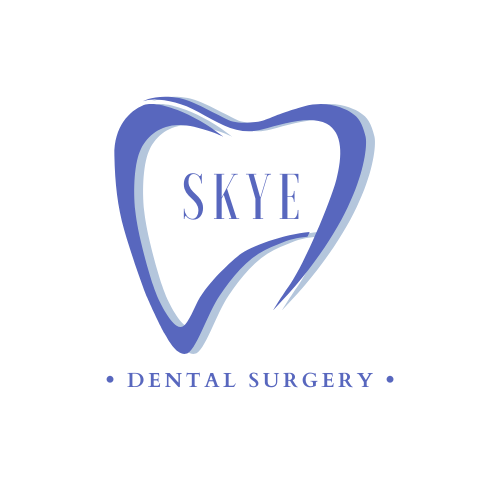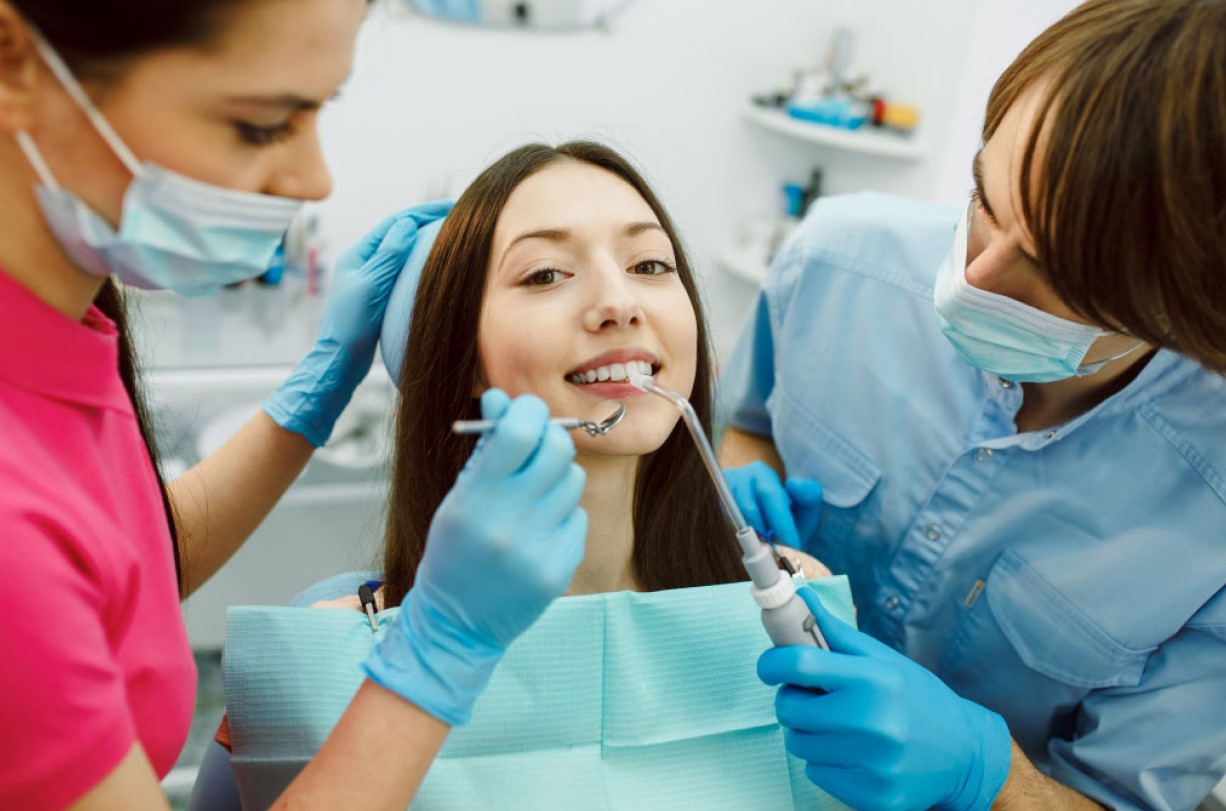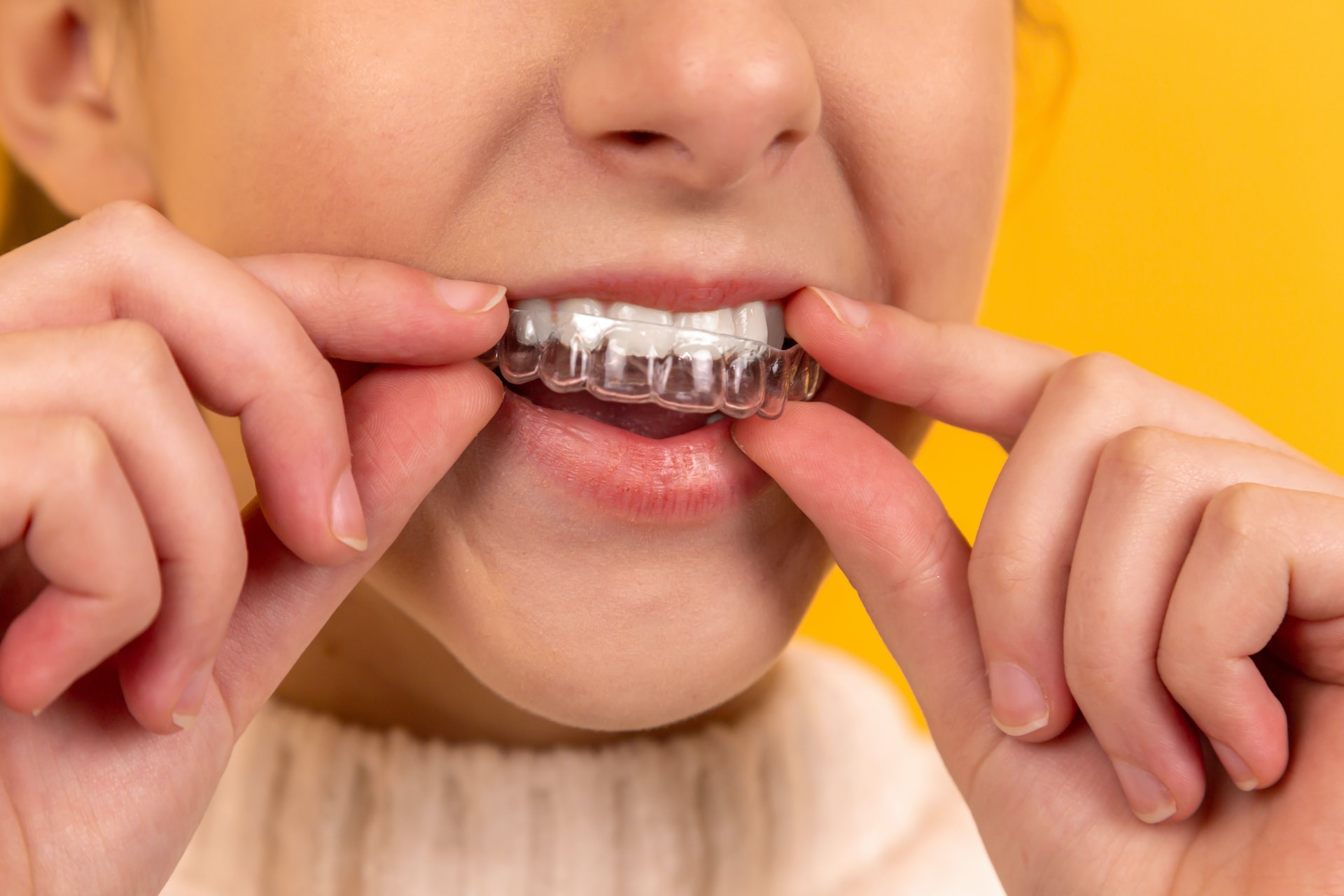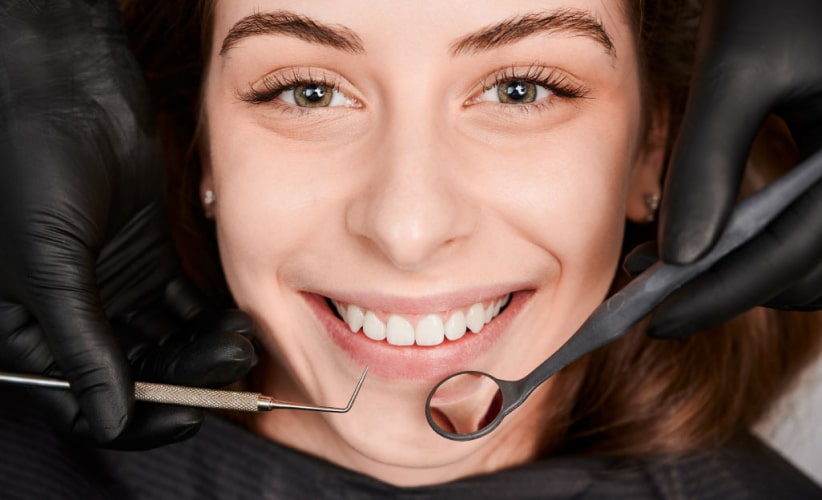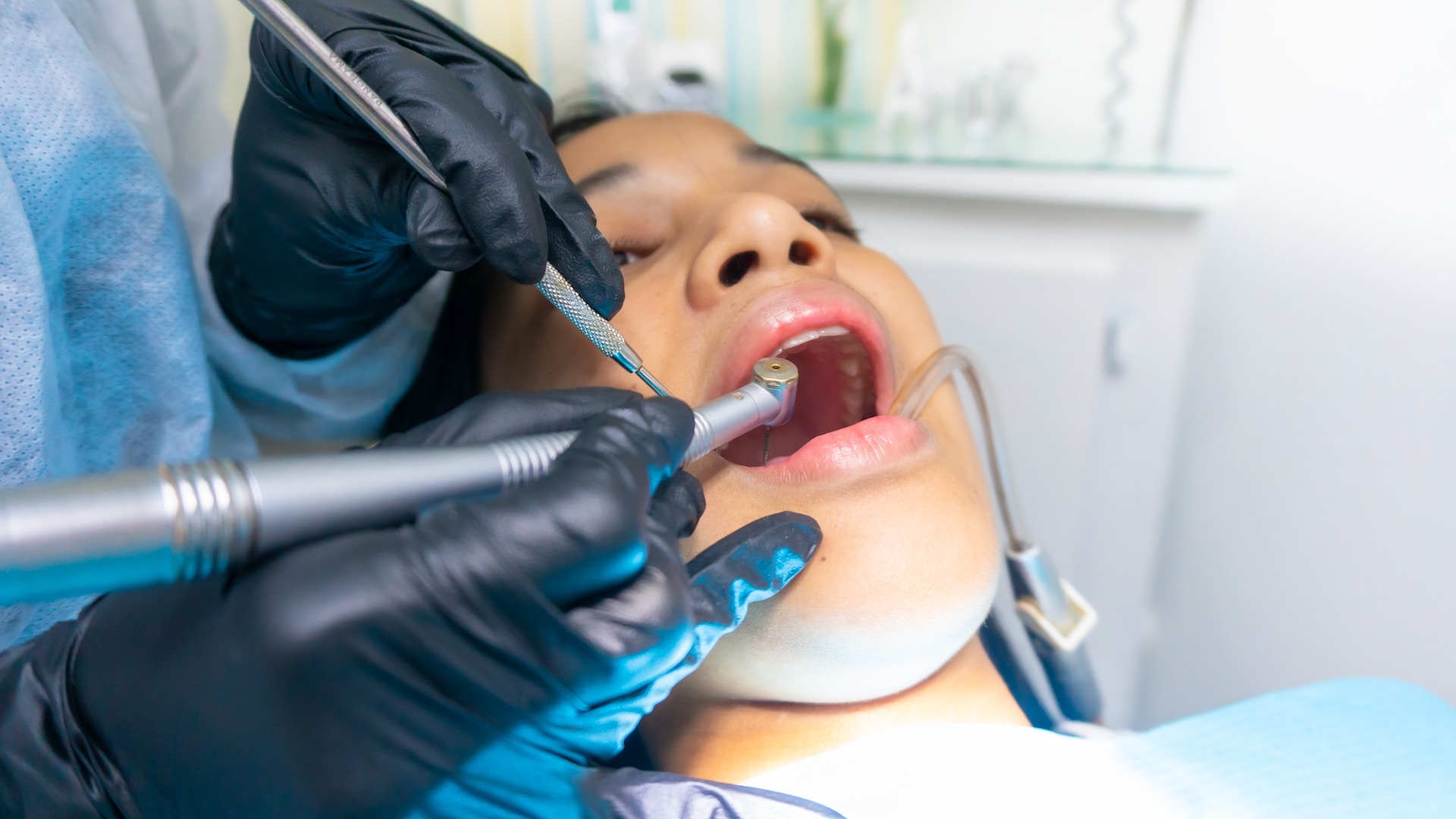
Are your teeth not fitting together properly when you close your mouth? You might have a crossbite, a common dental issue.
Unlike a regular bite, where the upper teeth should overlap the lower ones, a crossbite causes the lower teeth to stick out in front or behind the upper teeth.
This guide is here to help you understand what a crossbite is, how to spot its signs, and what can be done to fix it. With the help of your dentist you can regain a healthy smile and proper bite.
Join us on this journey to find answers to all your crossbite-related questions.
What Is a Crossbite?
A crossbite is a malocclusion, meaning the teeth do not align properly when the jaws come together. In a healthy bite, the upper teeth should overlap the lower teeth slightly, with the upper front teeth resting just in front of the lower front teeth.
However, in the case of a crossbite, the opposite occurs. There are different types of crossbites, which we will discuss in the next section.
What Are Different Types of Crossbite?
Anterior Crossbite
This type of crossbite occurs when the upper front teeth sit behind the lower front teeth when the jaws are closed. It can affect one or more teeth, making it challenging to bite and chew properly.
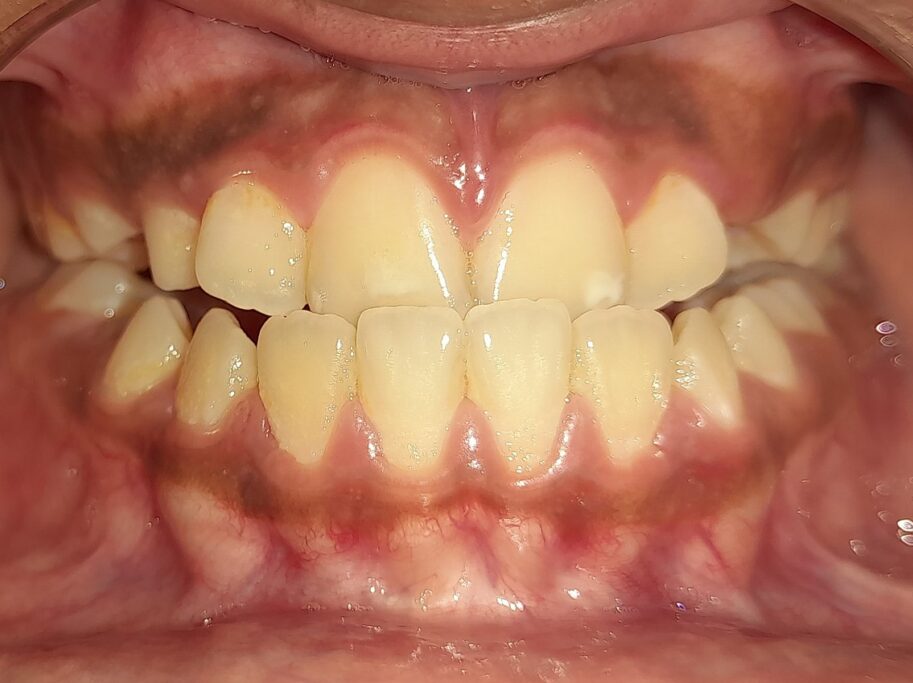
Source: Wikipedia
Posterior Crossbite
A posterior crossbite, on the other hand, involves the back teeth. In this case, the upper back teeth are positioned inside the lower back teeth when the jaws come together. This misalignment can affect your bite and cause issues like TMJ (Temporomandibular Joint) problems.
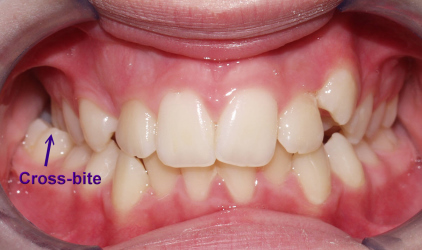
Source: Wikipedia
Unilateral Crossbite
A unilateral crossbite occurs when only one side of the mouth has a misalignment issue. It can affect both anterior and posterior teeth, causing asymmetry in the bite.
Bilateral Crossbite
Bilateral crossbite, also known as a scissors bite, involves a misalignment on both sides of the mouth. Both anterior and posterior teeth can be affected in this case.
What Causes A Crossbite?
Understanding the underlying causes of a crossbite is crucial for preventing and addressing the issue. Here are some common causes:
- Genetics: Crossbites can run in families, making genetics a contributing factor.
- Abnormal Jaw Growth: Irregular jaw development, where the upper and lower jaws don't grow evenly, can result in a crossbite.
- Prolonged Habits: Prolonged use of pacifiers, thumb-sucking, or extended bottle-feeding in childhood can impact teeth alignment and lead to crossbites.
- Early Tooth Loss: Losing primary (baby) teeth prematurely can disrupt the normal development of the permanent teeth and result in crossbites.

What Problems Can An Untreated Crossbite Create?
Ignoring a crossbite can lead to various dental and health problems, so early diagnosis and treatment are essential. Here are some potential issues that may arise if a crossbite is left untreated:
- Dental Complications: Untreated crossbites can cause dental problems like enamel wear, tooth decay, and gum disease due to misalignment and difficulty with oral hygiene.
- TMJ Disorders: The strain on the jaw joints from a crossbite can lead to TMJ disorders characterized by pain, clicking, and limited jaw movement.
- Speech and Communication Difficulties: Crossbites can lead to speech issues, potentially affecting a person's ability to communicate effectively.
- Facial Asymmetry: In severe cases, a crossbite can contribute to facial asymmetry, affecting a person's appearance and self-esteem.
- Chewing and Digestive Problems: Difficulty chewing properly can lead to digestive issues, as food may not be broken down adequately during the initial stages of digestion.
Why Is Early Crossbite Intervention Essential for Your Child’s Well-Being?
Early intervention for crossbites can significantly impact a child's physical appearance and overall well-being. Here are some major benefits:
Increasing Self-Esteem
Treating a childhood crossbite can help avoid or lessen the obvious asymmetry in the face and other cosmetic problems related to this disease. Children are more likely to grin and feel good about their appearance, which might boost their self-esteem.
Encouraging Natural Facial Growth
By acting early, dentists can direct a child's jaw development in a more balanced and natural way. This results in a more attractive appearance by improving facial development and aesthetics.

Preventing Future Orthodontic and Dental Complications
If crossbites are treated early on, some orthodontic and dental problems that could develop if the problem is not addressed can be avoided. This involves avoiding TMJ issues, uneven tooth wear, and speech challenges. Early intervention also encourages healthy jaw extension.
Encouraging Appropriate Jaw Expansion
Proper jaw expansion is essential for a child's oral and facial development, and it can be greatly aided by early detection and management.
Early treatment of crossbites allows orthodontists to direct the growth of the jaws in a more symmetrical and balanced way, which improves the bite and smile. In addition to improving the appearance of the face, proper jaw expansion protects a child's oral health.
A child's oral and facial growth greatly depends on appropriate jaw extension, made possible by early detection and correction.
Hence, early treatment of crossbites allows dentists to direct the growth of the jaws in a more symmetrical and balanced way, which improves the bite and smile.
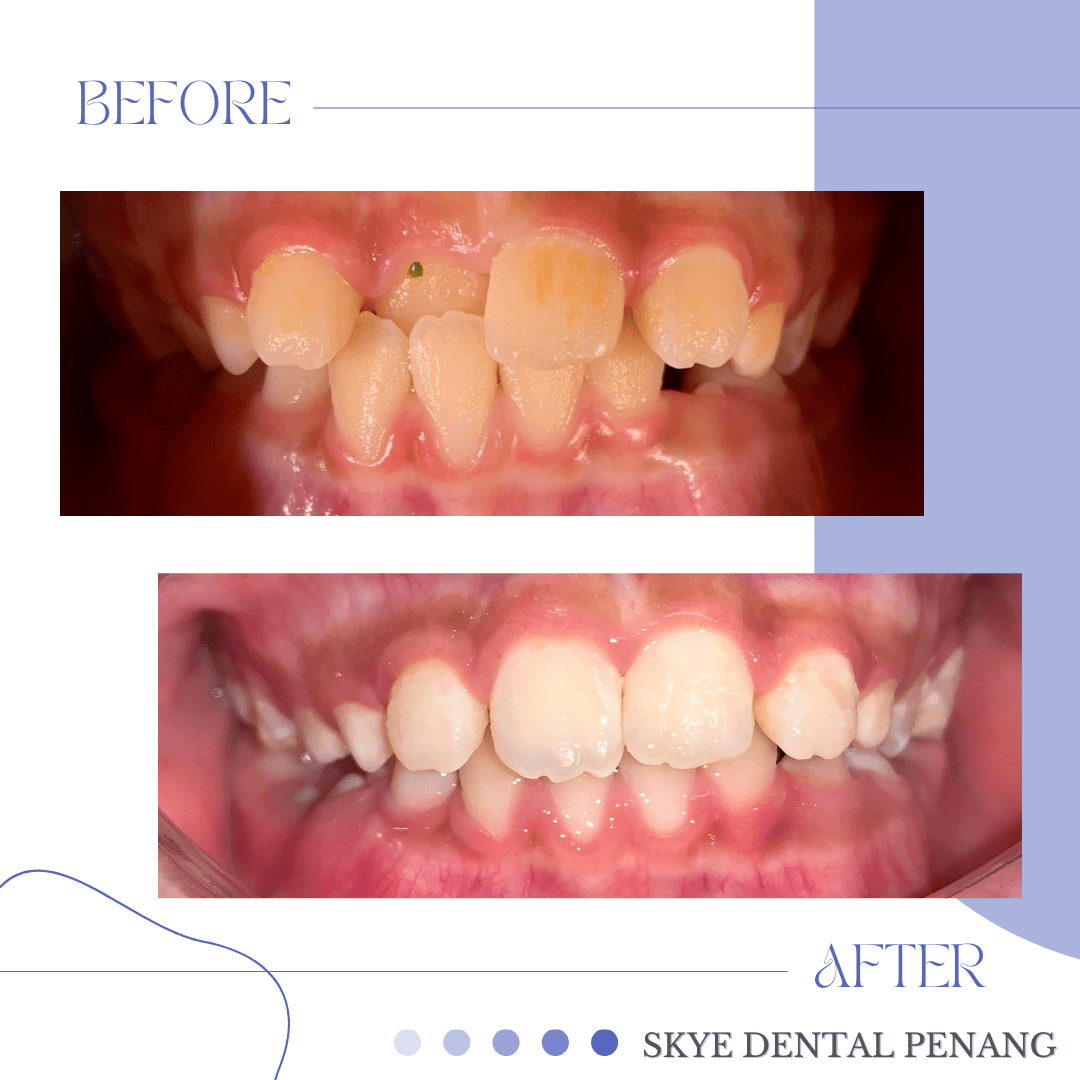
In addition to improving the appearance of the face, proper jaw expansion lowers the likelihood of having misaligned teeth.
See a dentist as soon as possible if you think your child may have a crossbite. They can offer you the required advice and treatment choices.
Your child can have a lifetime of more symmetrical, balanced, and self-assured smiles with the support of appropriate jaw expansion and early intervention.
How Can A Crossbite Be Corrected?
Myofunctional appliances
Myofunctional appliances are orthodontic devices that are sometimes used to correct crossbites in children.
These appliances promote proper oral muscle function and guide the growth and alignment of the jaws and teeth.
Myofunctional appliances can be particularly effective for certain types of crossbites in children, such as anterior crossbites or crossbites related to habits like thumb-sucking.
Myofunctional appliances are often used as part of interceptive orthodontic treatment. This means that they are used early in a child's development, usually between the ages of 7 and 11, to guide jaw and dental growth while the child is still growing.
Early intervention can help prevent more severe orthodontic issues from developing and make later treatment, such as braces, more effective.
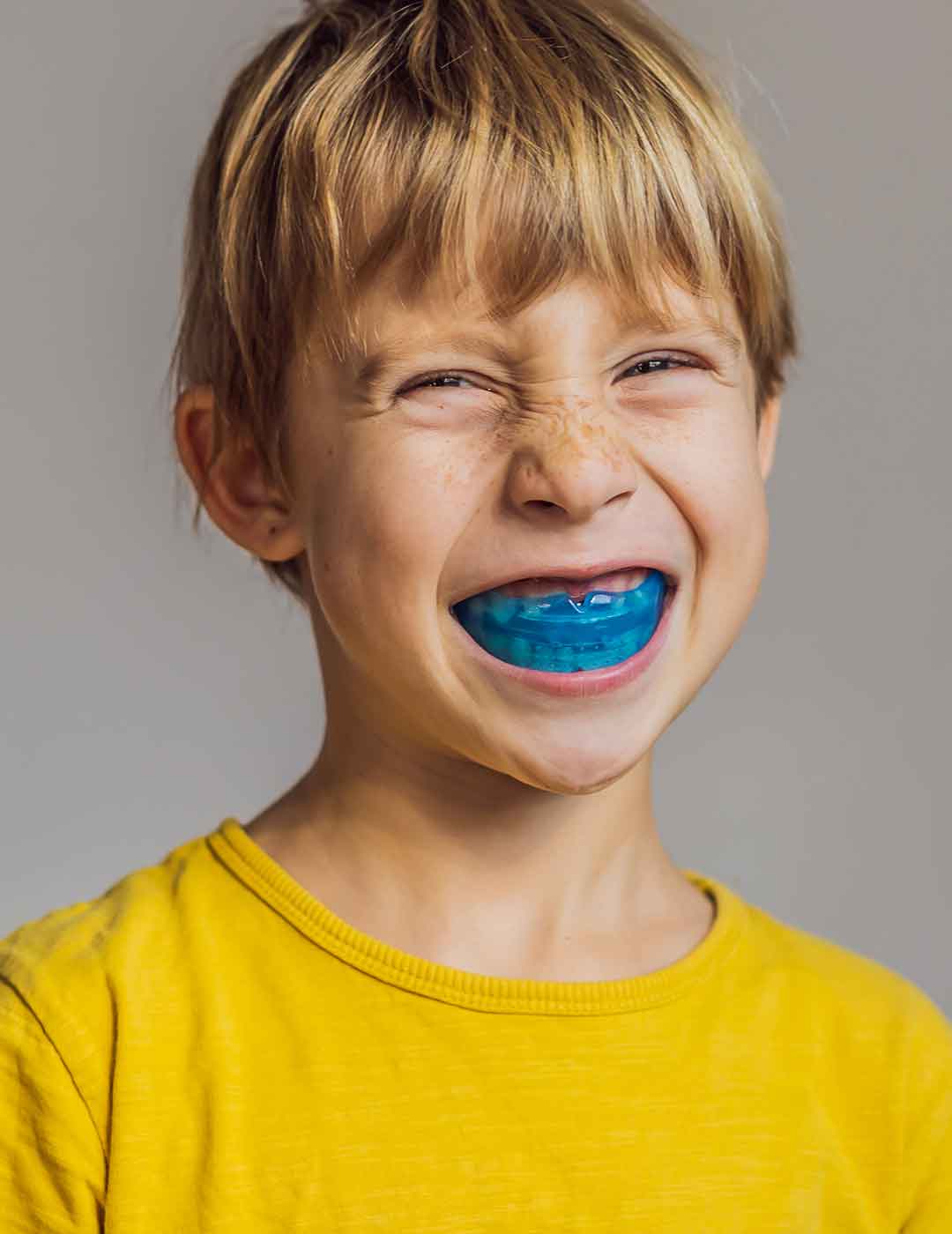
It's important to note that the success of myofunctional appliance treatment for correcting crossbites in children depends on factors such as:
- The child's age
- Type and severity of the crossbite
- Their commitment to wearing and using the appliance as instructed
Therefore, parents and children must work closely with their dentist throughout treatment to ensure the best possible outcome.
Early intervention with myofunctional appliances can be a valuable strategy for correcting crossbites in children and promoting healthy dental and facial development.
If you suspect your child has a crossbite or other orthodontic issues, consult a dentist to determine the most appropriate course of treatment.
Removable appliances (Palatal Expanders)
Palatal expanders are frequently used to correct posterior crossbites, especially in children. These devices are designed to widen the upper jaw's arch by gradually separating the two halves of the upper jaw bone. As the palate expands, the upper teeth are moved into their correct position.
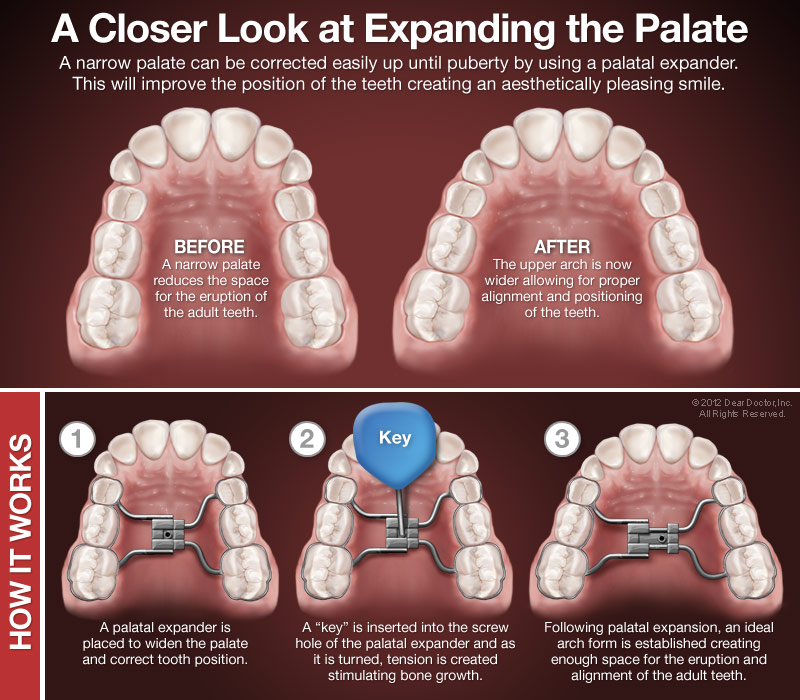
Limitations of Correcting Crossbites in Adulthood
Bone Development
One of the most significant limitations in adult crossbite correction is that the jaw bones have completed most of their growth. In childhood, bones are more moldable and responsive to orthodontic forces.
However, in adulthood, the scope for changing the bone structure is limited, making it more challenging to correct crossbites.
Longer Treatment Duration
Adult patients may experience longer treatment durations compared to children. Achieving significant changes in jaw position and alignment can take more time in adulthood due to the less flexible bone structure.
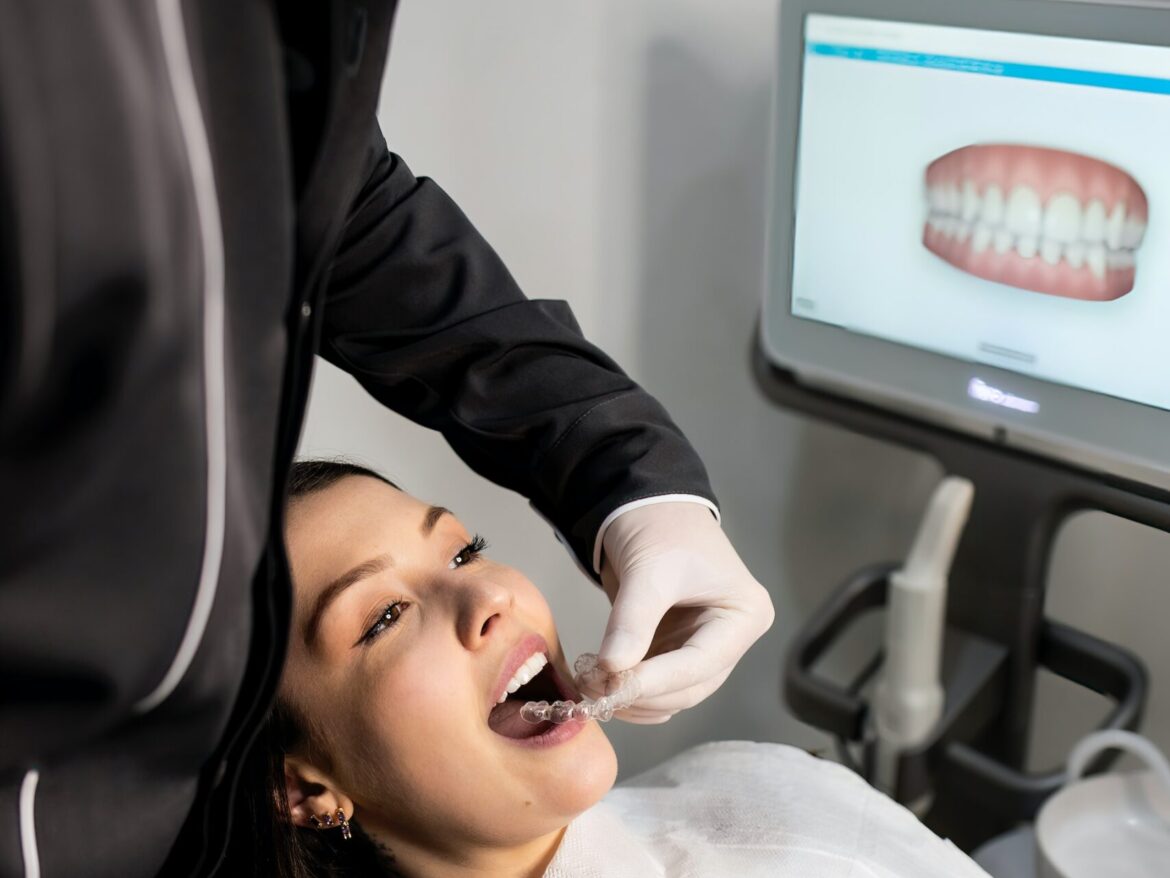
Surgical Intervention
In some cases, when crossbites are severe, surgical intervention may be necessary in adulthood. This involves orthognathic surgery to reposition the jaw, which is not typically required for younger patients with less severe crossbites.
Stability Concerns
Adult patients may face challenges related to long-term stability. The risk of relapse is higher in adult orthodontic treatment due to the completed growth of bones and the potential for more significant occlusal forces.
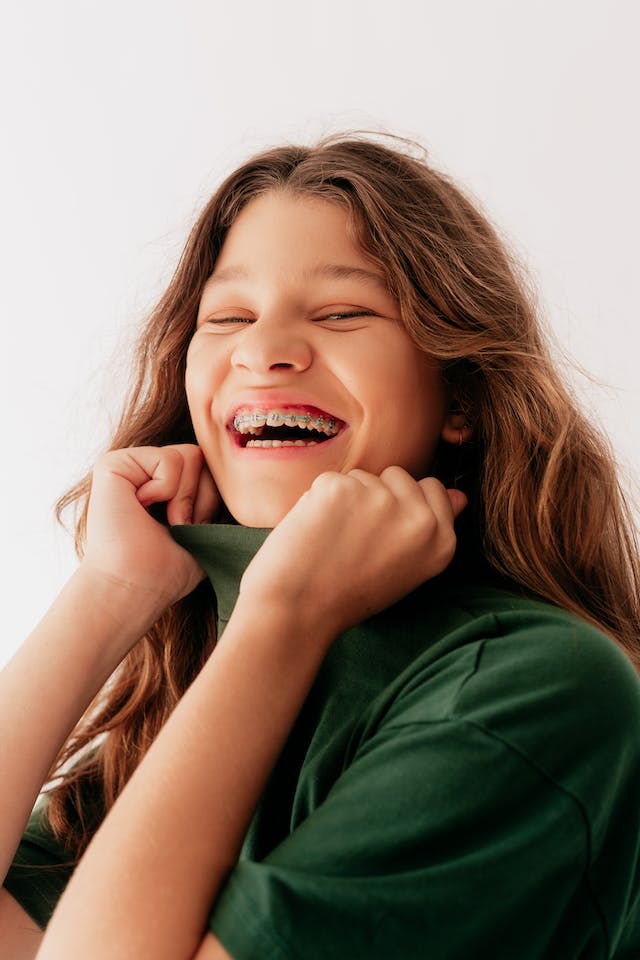
Dental Camouflage in Adult Crossbite Correction
Given the limitations in correcting crossbites in adulthood, dentists often employ a dental camouflage approach to enhance the patient's smile and bite without significantly changing the bone structure.
What Is Dental Camouflage?
Dental camouflage is a term used to describe orthodontic treatments aimed at improving the alignment and appearance of the teeth without significant alterations to the underlying bone structure or jaw position.
In other words, it focuses on enhancing the smile and functionality of the teeth within the existing anatomical confines. This approach is commonly adopted for adult patients, as their bones have typically ceased growing, making more extensive skeletal changes challenging.
The main goal is to improve tooth position and aesthetics with minimal bone structure changes.
How Does it Differ from Childhood Crossbite Correction?
In adult crossbite correction, the focus is primarily on repositioning the teeth within the existing bone structure.
Orthodontic treatments, such as braces or clear aligners, aim to improve the alignment and appearance of the teeth without making significant adjustments to the jaw.
The aim is to optimize the occlusion and smile without attempting to shift the jaw or achieve a more significant skeletal change because adult bones are less moldable.
While it may not address jaw discrepancies, it can still lead to a more aesthetically pleasing smile and better bite function. Dental camouflage typically involves minimal changes to the underlying bone structure.
Limitation: Retention and Maintenance
Adult patients who undergo dental camouflage need to be diligent about wearing retainers to maintain the corrected bite and prevent relapse.
The risk of relapse is higher in adult orthodontic treatment, and retainers play a crucial role in preserving the results.
A Word from Skye Dental
A crossbite, though common, demands timely attention. If untreated, it can lead to complications affecting facial features and oral health.
If you suspect there is a crossbite in your child, seek consultation with your dentist promptly to explore effective treatment options. Don't delay – addressing a crossbite early ensures better outcomes for your smile and overall well-being.
At Skye Dental Penang, we help our patients guide proper jaw and dental development. If you have concerns about crossbites or any other dental issues, we welcome you to schedule a consultation with our doctor today!
FAQ
Is crossbite only a cosmetic issue?
No, crossbite can lead to oral health problems and impact proper jaw development. It's not just cosmetic; addressing it is important for overall oral well-being.
Can crossbite be corrected in adults?
Yes, though more challenging than in children due to fully developed bones. Adult treatments often focus on dental alignment, requiring longer durations and potential surgical intervention.
What are the common treatments for crossbites in children?
Common treatments include braces, palatal expanders, and myofunctional appliances. Early intervention during childhood helps guide proper jaw and dental development.
Are there long-term benefits to correcting crossbite early?
Yes, early correction minimizes the risk of future issues and contributes to a more stable outcome. It reduces the likelihood of needing invasive treatments in adulthood, such as orthognathic surgery.
How do I know if my kid has crossbite?
Watch for signs like a misaligned jaw, teeth not fitting together, or asymmetry in the smile. If you notice these, consult a dentist or orthodontist for a proper evaluation.
When is the best time to check for crossbite?
Early detection is crucial. It's recommended to have your child evaluated for crossbite as soon as their permanent teeth start coming in, usually around age 7.
When is the best time to start treatment for crossbite?
Early intervention is ideal. Treatment can begin as soon as the issue is identified, often during childhood, to take advantage of natural jaw growth and flexibility for more effective results.
